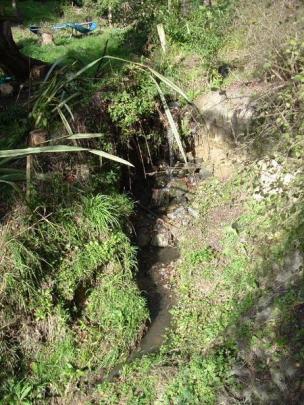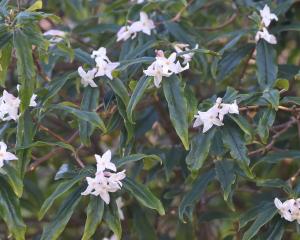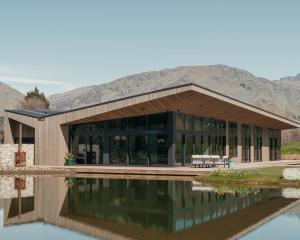You never know what you're going to find when you start looking under rocks ... Nigel Benson turns rock hound for a day.
All rocks are not created equal. Some rocks are more equal than other rocks. And man has sought out those rocks for thousands of years.
Within a century of arriving in New Zealand about AD1250, Maori had sorted out the best rocks for everything from ornaments and tools to weapon-making.
By AD1300, they were transporting finished tools and selected raw materials around the country.
Fast-forward 800 years and rock is mainly used in New Zealand for landscaping, aggregate for road construction, as a building material and to make concrete.
Rock provides the easiest sculptural element to enhance a garden and create a natural-looking landscape.
They add colour, contrast and interest and are maintenance-free.
Strategically placed rocks and plantings can also act as security barriers, protecting buildings from vehicles.
Dunback company Rocksville Rocks co-owner Jane Roberts has firm views on rocks in the garden.
"For rocks as features, we are all for the natural type of basalt or volcanic rocks covered in lichen moss. Each rock is totally unique and exclusive and well in excess of hundreds of years old," she says.
"The shapes have been carved hundreds of years ago in volcanic circumstances around Otago and beyond, making them special and with a definite sense of character.
"What also makes these rocks special is they change colour with the weather. During wet times, the lichen glows. During summer, they are quite grey and perfect as garden features, using lighting to attract the eye.
"Schist is very popular in Central and around most areas of Otago. It's excellent for stone walls, borders, retaining walls and as a building material. As is bluestone for retaining," she says.
Another popular landscaping rock is lava rock, which is a porous volcanic material and significantly lighter than other stone because it's filled with air pockets.
Mrs Roberts says there is strong demand for quarry rock to use as a feature in gardens but, as far as she is concerned, it's not the real deal if it does not have the lichen.
"I guess the real thing does cost, making cheaper alternatives attractive to some people and making our market a niche.
"Rocks are a very versatile product - from features using rock clusters on soil mounds with native plantings, to using them with water or lighting. Rock retaining walls are perfect.
"They look good as well as provide a good, strong, well-draining material and add a certain amount of rusticity and been-there-forever-type look.
"Medium to large rocks are perfect as a car-parking edge between grass and driveway or car-parking areas and safety on corner sections."
Rocksville Rocks sources most of its rock from grazing ground.
The company uses a specialised crane mounted on a truck, which has a rotating grapple head.
"This allows us to lift and place the rocks avoiding any damage and having them available in their original unique form," Mrs Roberts says.
The equipment means the company can also locate existing rock on a property and resite it.
"Rugged lifestyle blocks often have rocks, stump features or other interesting material. We just rehome it closer to be enjoyed as part of the garden."
In recent years, people have increasingly been constructing artificial rocks with cement.
Fake rock - or "faux rock" as our American friends like to call it - can be used to construct artificial rock staircases, stepping stones, fake stone ponds, water surrounds, artificial rock waterfalls and fake boulder gardens.
Artifical rocks have their advantages, according to the owner of Christchurch company Artificial Rock, Peter Taw.
Mr Taw created the rock features and artificial rocks for the Otago Museum Tropical Forest butterfly attraction.
"The great thing about artificial rocks is you can shape them into any design you want. Whereas, with a rock from a quarry you get what you're given," he says.
"Also, a big artificial rock can usually be manhandled by two men. You don't need a crane to shift it lke you do with real rocks.
"You can also use them indoors on wooden floors, or put lights in them. They're very, very versatile."
Mr Taw's company also makes articial rock climbing walls.
Fake it, make it
1 part Portland cement
1 part builder's sand
2 parts peat moss
Acrylic fortifying additive
Optional: Concrete dye colourants
Enough water to make a mud-pie consistency
(The acrylic fortifying additive is a "must do" as it helps make the rocks stronger.)
1 Create your mould/form using styrofoam, wood, chicken wire, etc. An armature might have to be built for structural support on larger rocks or boulders.
Reinforce smaller forms, if necessary, to prevent them from collapsing. For example, you can stuff a chicken-wire form with wadded-up plastic shopping bags.
2 Be sure to apply your mixture at least 7.5cm thick to the entire mould.
3 You may begin sculpting at this stage. Use a point trowel for rock veins and a large, highly porous sea sponge for the overall texture.
4 Cure it properly or your rock won't last. Seal it in a plastic bag and let it dry slowly for up to a month. The longer and more slowly it can cure in a moist environment, the stronger your rock will be.
5 After the initial curing stage, you may want to further enhance your rock by rubbing its surface with a real rock that is very rough. Scrape and scrape; wash down your faux rock when done; and allow it to dry thoroughly.
6 Now you can apply a stain or painted finish to create a realistic appearance. Apply concrete sealer to protect the colour and texture for years to come.
(Source: www.the-artistic-garden.com)
Take a look
www.break.com/usercontent/2009/3/How-To-Make-Fake-Faux-Artificial-Rocks-...
www.artificialrock.com.au/artificial-rock.htm
Leaving no stone unturned
The biggest Otago rock project in recent memory was when 880 tonnes of rock was imported from China in 2007 for the construction of the $6.5 million Dunedin Chinese Garden.
The rocks had to be washed, fumigated and inspected by Maf Biosecurity New Zealand before they could be used in the garden.
The rocks were selected because they were "female and the right shape".
Traditional Chinese belief held that a garden manifests properties that influence the fortunes of those who use it.
The garden was modelled on a 17th-century Ching dynasty southern Chinese garden.
It is one of only a handful of authentic Chinese gardens outside China.
Rock tips
• Repetition is important. Rocks repeat endlessly in nature. If you have only one natural rock outcropping in the yard, add more to make stone a theme. Vary sizes and arrange them in a random fashion so it appears as if they jut from the earth, simulating nature.
• Large rocks should complement plants, such as ferns, while smooth, flat rocks can be placed for natural seats.
• Smaller rocks can be used as retaining walls or to enhance water features. Stones can also be used to create a riverbed.



















